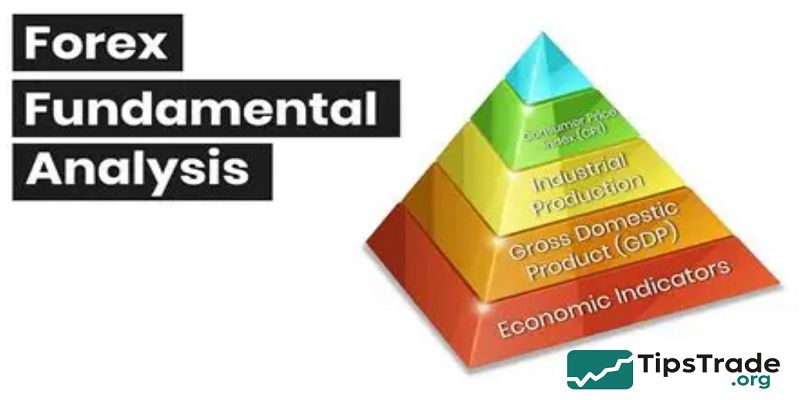Forex fundamental analysis is the study of economic indicators, central bank policies, and global events that drive currency values. Unlike technical analysis, which focuses on charts and price patterns, fundamental analysis helps traders understand the real forces behind market movements. By tracking interest rates, inflation reports, employment data, and GDP growth, traders can anticipate long-term trends and avoid emotional trading decisions. Through the article below, let’s visit tipstrade.org to find out more details
What is in Forex Fundamental Analysis ?
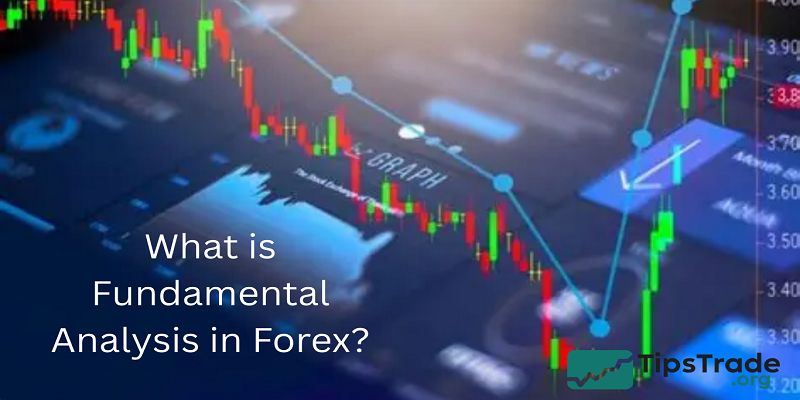
- Fundamental analysis in Forex is the process of evaluating a currency’s value by studying economic and political data.
- For example, if a country’s economy is growing, its currency usually strengthens as investors gain confidence.
- Traders look at data such as GDP growth, interest rate decisions, and employment reports to predict how currency pairs might move.
- For instance, when the U.S. Federal Reserve raises interest rates, the U.S. dollar often appreciates because higher yields attract more investors.
- Unlike short-term speculation, fundamental analysis often focuses on the “why” behind market movements, making it essential for medium- to long-term strategies.
Technical Analysis vs Fundamental Analysis
- Technical analysis studies price charts, patterns, and indicators such as moving averages or RSI to predict short-term moves.
- Fundamental analysis, on the other hand, is concerned with economic health, political stability, and monetary policies.
- While some traders swear by technicals, ignoring fundamentals can be risky—especially when unexpected news events shake the markets.
- For example, even the most perfect chart setup can fail when central banks surprise with interest rate hikes.
- The best traders often combine both approaches: fundamentals to understand direction, and technicals to time entries and exits.
Why Fundamental Analysis Still Matters in Forex
- In today’s fast-paced world of algorithmic trading and technical strategies, many traders overlook fundamentals.
- However, history shows that economic fundamentals are the true drivers of long-term trends.
- For example, during the Eurozone debt crisis, the euro weakened not because of chart patterns but because of weak fundamentals in member economies.
- Similarly, the strong U.S. dollar trend of 2022–2023 was largely driven by the Federal Reserve’s aggressive interest rate hikes.
- Ignoring these factors leaves traders vulnerable to large market shocks.
- By incorporating fundamental analysis, you can anticipate big moves instead of simply reacting to them.
>>See more:
- What is Forex? The Complete Guide for Beginners
- Forex strategy: Top 10 most effective strategies for beginners
- Important Economic Indexes Every Trader Needs To Know
- Top 10 best forex currency pairs to trade in 2025
Key Economic Indicators in Forex

GDP & Growth Figures
- Gross Domestic Product (GDP) is one of the most important indicators of a country’s economic health. Strong GDP growth signals a robust economy, which typically supports a stronger currency.
- For instance, if the Eurozone reports better-than-expected GDP numbers, the euro may appreciate against other currencies.
- However, GDP reports are lagging indicators, meaning they reflect past performance. Smart traders use GDP in combination with forward-looking data, such as manufacturing surveys, to anticipate market moves.
Inflation: CPI, PPI, and Core Inflation
- Inflation measures the rate at which prices for goods and services rise. Central banks closely monitor inflation and often adjust interest rates in response.
- Consumer Price Index (CPI) and Producer Price Index (PPI) are key reports that traders watch.
- If inflation is high, central banks may raise rates to cool down the economy, leading to currency appreciation. For example, when U.S.
- CPI surged in 2021, expectations of Fed tightening pushed the dollar higher. Core inflation, which excludes food and energy, is often considered a more stable indicator.
Interest Rates & Central Bank Decisions
- Interest rates are perhaps the single most influential factor in Forex. When a country raises its rates, it typically strengthens its currency because investors seek higher returns.
- Central banks such as the Federal Reserve, European Central Bank, and Bank of Japan make policy decisions that can shake the markets instantly.
- Traders often follow central bank press conferences and minutes closely to gauge future moves.
- For example, the “dot plot” from the Fed provides insight into where policymakers see interest rates heading, which can heavily impact USD pairs.
Employment Data & Non-Farm Payrolls (NFP)
- Employment data provides a snapshot of the labor market. In the U.S., the monthly Non-Farm Payrolls (NFP) report is one of the most closely watched releases.
- Strong job growth suggests a healthy economy, boosting the dollar, while weak numbers may lead to a sell-off. But it’s not just the headline number—wage growth and unemployment rates also matter.
- Traders often prepare for NFP by reducing risk exposure due to the extreme volatility it causes in the minutes after release.
Trade Balance and Current Account
- Trade balance measures the difference between a country’s exports and imports. A surplus generally supports the local currency, while a deficit can weaken it.
- For example, Japan often runs a trade surplus, which historically supports the yen. However, a sudden rise in import costs (e.g., due to rising oil prices) can pressure the currency.
- Current account data provides a broader view of a nation’s trade and investment flows, offering another key fundamental clue.
Factors Influencing Currency Movements
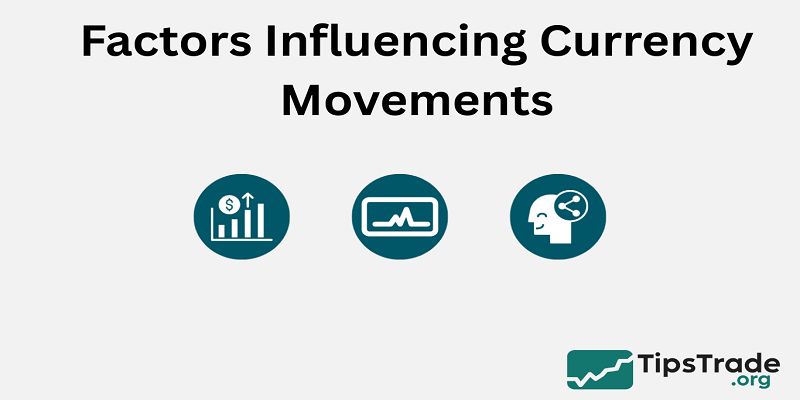
Monetary Policy and Interest Rate Outlook
- Central bank monetary policy is a primary driver of currency markets. Expectations of future interest rate hikes or cuts can move currencies even before decisions are announced.
- Traders follow speeches from central bankers, such as the Fed Chair or ECB President, to anticipate changes.
- Forward guidance is a powerful tool, often signaling policy shifts well in advance.
Political and Geopolitical Risks
- Political uncertainty often leads to currency weakness, as investors seek safer assets. Brexit is a prime example: during negotiations, the British pound saw wild swings based on political developments.
- Similarly, geopolitical conflicts or trade wars can trigger sudden market shifts.
- Experienced traders monitor political calendars alongside economic calendars to avoid being blindsided.
Commodity Prices and Currency Correlations
- Some currencies, known as “commodity currencies,” are closely tied to global commodity prices.
- For example, the Canadian dollar often moves in line with oil prices, while the Australian dollar correlates with gold and iron ore prices.
- A spike in commodity prices can strengthen these currencies, while a drop can weaken them.
- Understanding these correlations can help traders predict currency moves more accurately.
Market Sentiment and Capital Flows
- Investor sentiment also plays a role in Forex. When global investors are optimistic, they tend to move money into higher-yielding currencies.
- During crises, they often flock to safe havens like the U.S. dollar, Japanese yen, or Swiss franc.
- Monitoring sentiment indicators, such as the VIX (volatility index) or currency strength meters, can provide traders with additional clues.
- >>See more:
Applying Fundamental Analysis in Forex Trading
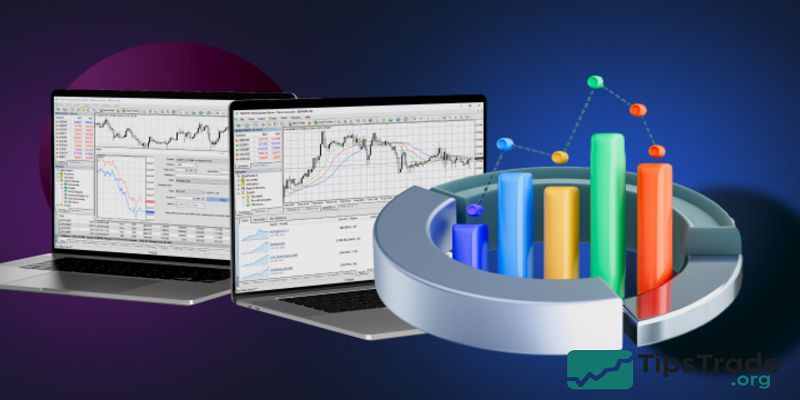
Trading News Events
- Trading news events is one of the most common ways to apply fundamental analysis. For example, traders often prepare for the U.S. NFP by setting pending orders in anticipation of volatility.
- While risky, news trading can be profitable if executed correctly. It requires fast execution, proper risk management, and awareness of market expectations versus actual results.
Medium- and Long-Term Strategies
- Fundamental analysis is particularly useful for medium- to long-term trading. For instance, if you expect the Federal Reserve to tighten monetary policy over the next year, you might look for long opportunities in USD pairs.
- Swing traders and position traders often rely more on fundamentals than day traders, using them to identify broader trends.
Combining Fundamental and Technical Analysis
- The most effective traders often combine both analysis styles. Fundamentals can provide the direction (“what to trade”), while technicals help with timing (“when to trade”).
- For example, if fundamentals suggest a strong U.S. dollar, traders may wait for a technical pullback before entering a long trade.
- This synergy helps balance the strengths and weaknesses of each approach.
Risk Management During News Events
- Volatility during news releases can lead to slippage, widened spreads, and unexpected losses.
- That’s why risk management is crucial. Many traders reduce their position sizes, avoid overleveraging, or use guaranteed stop-loss orders around major announcements.
- Managing emotions is equally important—fear and greed often amplify during fast-moving news events.
Tools and Resources for Fundamental Analysis
Economic Calendars
- Economic calendars are must-have tools for Forex traders. Websites like Investing.com, Forex Factory, and DailyFX provide detailed schedules of upcoming events, including GDP, inflation, and employment reports.
- These calendars also highlight the expected market impact, allowing traders to prioritize key data releases.
Financial News and Market Reports
- Reliable financial news sources, such as Bloomberg, Reuters, and CNBC, keep traders updated on breaking events.
- Central bank websites and official press releases also provide authoritative insights.
- Traders should develop a routine of checking these sources daily to stay ahead of market-moving developments.
Institutional Research and Analysis
- Large banks and investment firms often publish research reports that offer valuable insights into currency markets.
- For instance, Goldman Sachs or JPMorgan may release forecasts based on their economic models.
- While retail traders may not have access to all institutional data, many summaries are publicly available.
Trading Platforms and Tools
- Modern trading platforms often integrate news feeds, sentiment indicators, and fundamental analysis dashboards. MetaTrader and TradingView, for example, allow traders to set alerts for specific news events or economic indicators. Using these tools can help streamline the decision-making process.
Common Mistakes in Fundamental Analysis
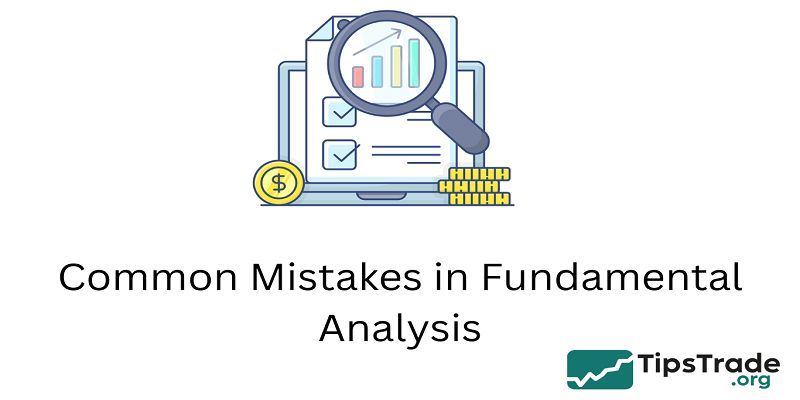
Overreacting to News Headlines
- A common mistake is reacting impulsively to news without considering the broader context.
- For instance, a weak jobs report may cause an initial sell-off in a currency, but if the overall trend is strong, the effect might be temporary.
Ignoring Long-Term Trends
- Many beginners focus too much on short-term news, forgetting the importance of long-term fundamentals.
- A single weak GDP report may not reverse a strong multi-year trend driven by central bank policy.
Trading Without a Plan
- Jumping into trades based on headlines without a predefined strategy is a recipe for losses.
- Successful traders plan their entries, exits, and risk management in advance.
Relying on One Data Source
- Depending on a single news outlet or indicator can be misleading.
- Traders should cross-check data from multiple sources and consider the bigger picture before making decisions.
Conclusion
Forex fundamental analysis provides traders with a deep understanding of the forces that move currency markets. While technical analysis helps with timing trades, fundamentals reveal the underlying drivers of long-term trends. By studying economic indicators, central bank policies, and geopolitical events, traders can anticipate market moves with greater confidence.

